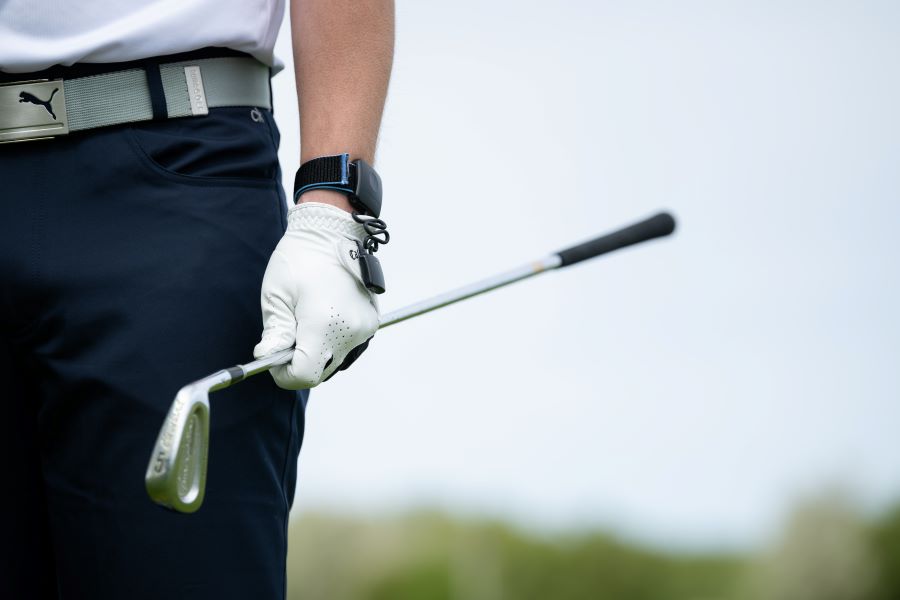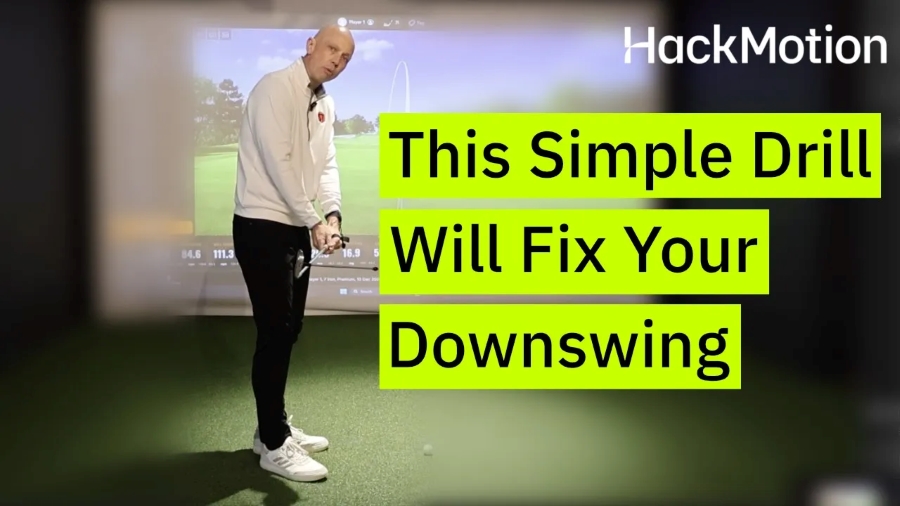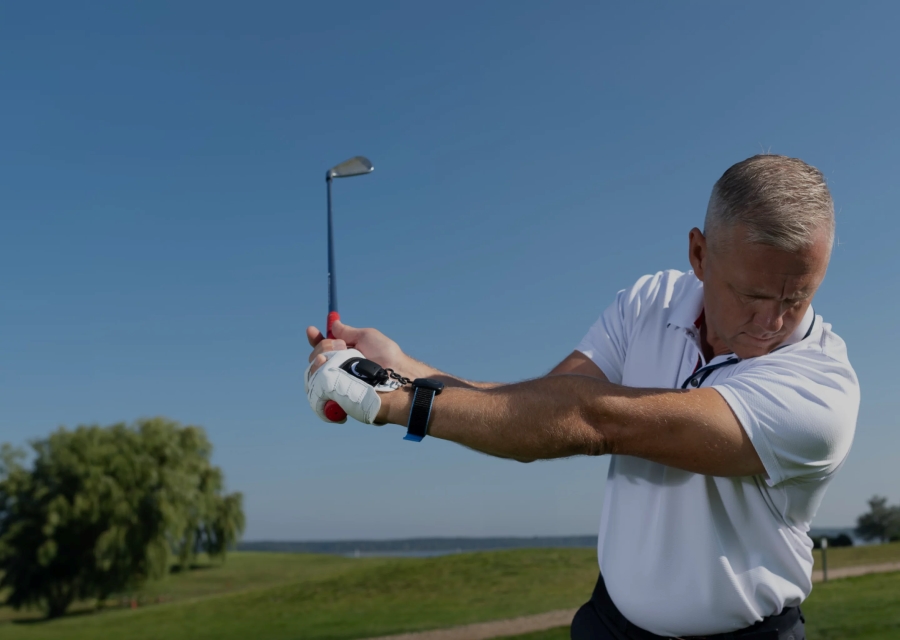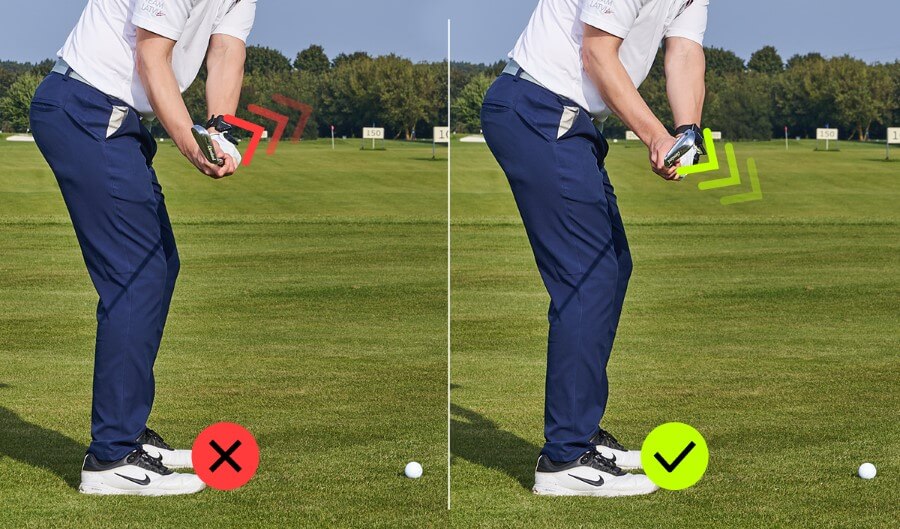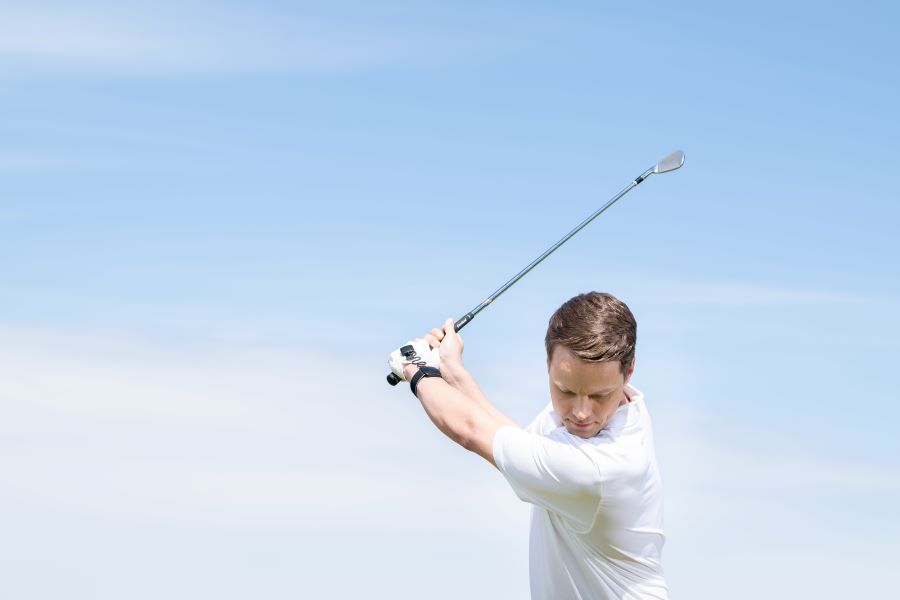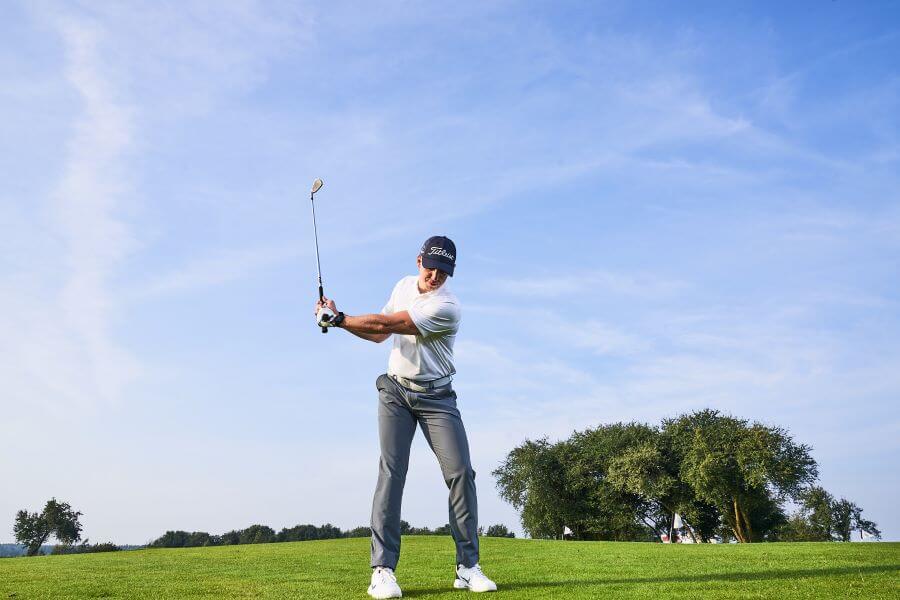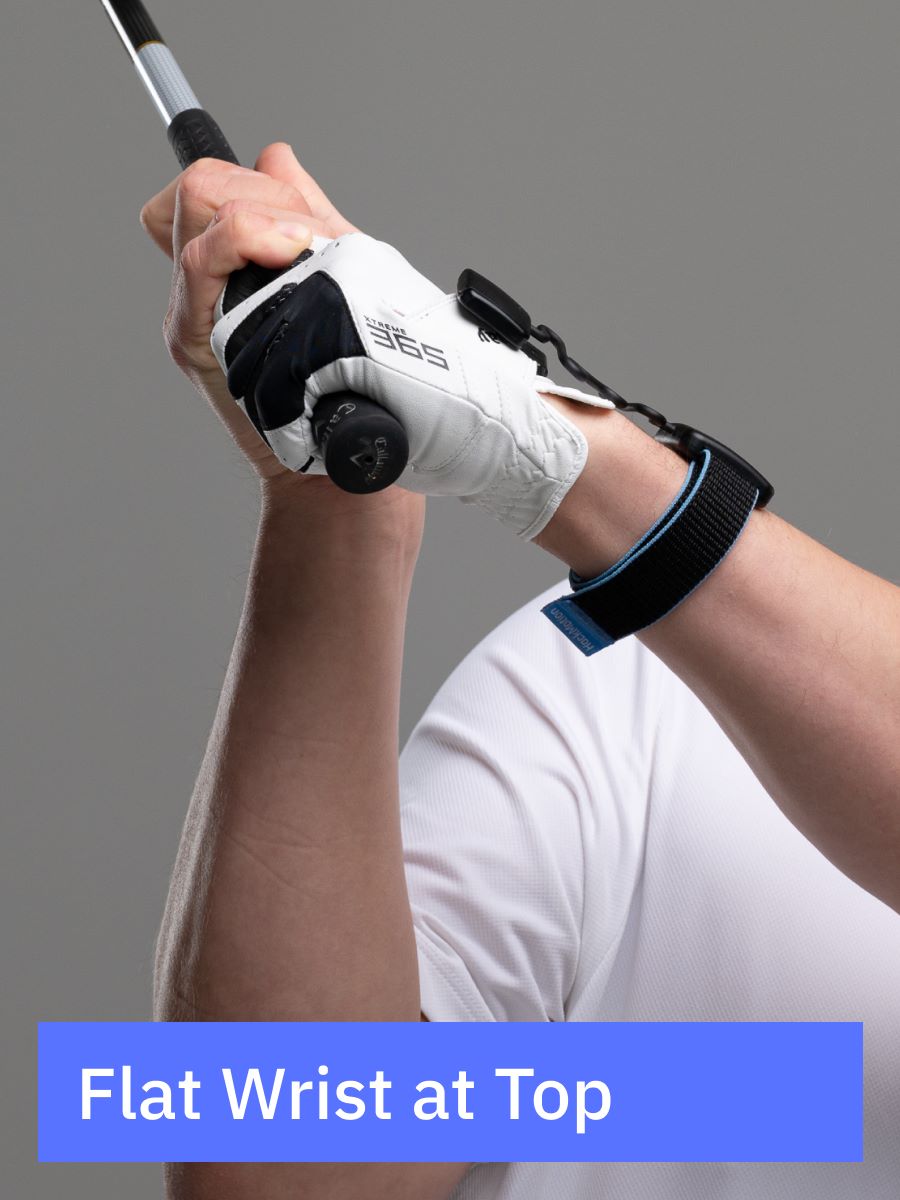Bowed Wrist in Golf (Could It Be the Swing Secret You Needed?)
Have you ever noticed that pictures of professionals at the top of their backswing show a lot of variation?
Most of that variation has to do with wrist angles. Some players have bowed wrists, others cupped, and others flat.
Which one is best?
Most experts (myself included) would argue that somewhere between a flat and bowed wrist in golf is your best bet. I will show you what a bowed wrist is, why it matters, and how you can practice it to become a better player.
Bowed Left Wrist in Golf (Key Takeaways)
If you need to bookmark this article and come back later, here are the key takeaways you can take away right now:
- A bowed wrist at the top of the golf swing occurs when the wrist is in a more flexed position as opposed to an extended position.
- The bowed wrist will lead to a closed clubface.
- Bowing the wrist creates more of a hook or draw on your golf shots.
- A bowed wrist position at the top is better than a cupped wrist and can often be fixed or tweaked relatively easily.
- Changing your grip can improve the overall position of the wrists throughout the swing.
- HackMotion is like having your coach on your wrist as you practice.
If you prefer to watch instead of read, here’s a video recap explaining what a bowed wrist is, why it matters, its impact on golf shots, and how you can practice it to become a better player.
Contents
Wrists in the Golf Swing Explained
To understand the bowed wrist position and how it impacts your game, you must first know how the wrists work in the golf swing.
You need to know three movements: extension/flexion, radial deviation/ulnar deviation, and rotation.

Extension/Flexion
An issue with flexion causes the bowed wrist. When the wrists extend and flex, it’s referred to as bowing or flexing. You may feel it as an arch or a bend of your left wrist (right-handed golfers). When you extend the wrist, the clubface opens; when you flex it, it closes.
The extension and flexion in your wrist are where control of the clubface is created.
Radial Deviation/Ulnar Deviation
If you have ever had a golf instructor tell you that you are cocking your wrists too soon or too late, it could be an issue with radial or ulnar deviation. This, more simply explained, is the cocking and uncocking of the wrists.
Radial and ulnar deviation deal with the side-to-side movement of your wrists. Power is created with these angles in your swing.
Rotation
Finally, the wrist can rotate. The rotation of the wrists in the golf swing is considered pronation or supination. However, I’ll admit on this one when I think of lead wrist rotation; it makes me think more of forearm rotation.
Of course, the wrist is rotating, but it is felt more in the forearm. The better you get at rotation in the left wrist, the easier it is to be consistent in golf. Your timing and tempo may improve, and you will feel more control of your shots.
What’s the Proper Wrist Position?
The million-dollar question that all golfers want the answer to is what the exact wrist position is.
There is no perfect wrist position.
The flat left wrist is the easiest and most consistent position to hit from. Moving to the bowed wrist, your clubface could get a little closed at the top.
When studying professional golfers, we find that a slightly bowed left wrist at impact is positive.
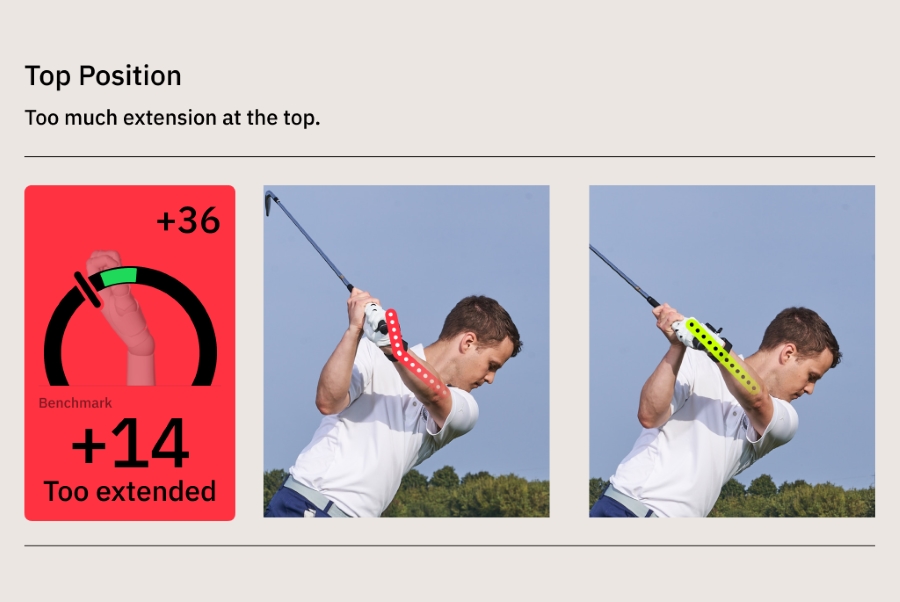
Players who can reduce the amount of extension in their downswing and end up with a flat or slightly bowed wrist at impact hit straighter shots. In addition, a slightly closed clubface at impact will likely lead to a draw (a preferred shot shape).
Even though there are no exact numbers of the perfect wrist angle in the swing, the better players lean towards flat and bowed instead of extended.
How is a Bowed Wrist Different from a Cupped or Flat Wrist in Golf?
The main difference between the cupped, flat, and bowed wrists is how they impact the clubface angle.
Bowed wrists close the clubface, whereas cupped wrists tend to open it up.
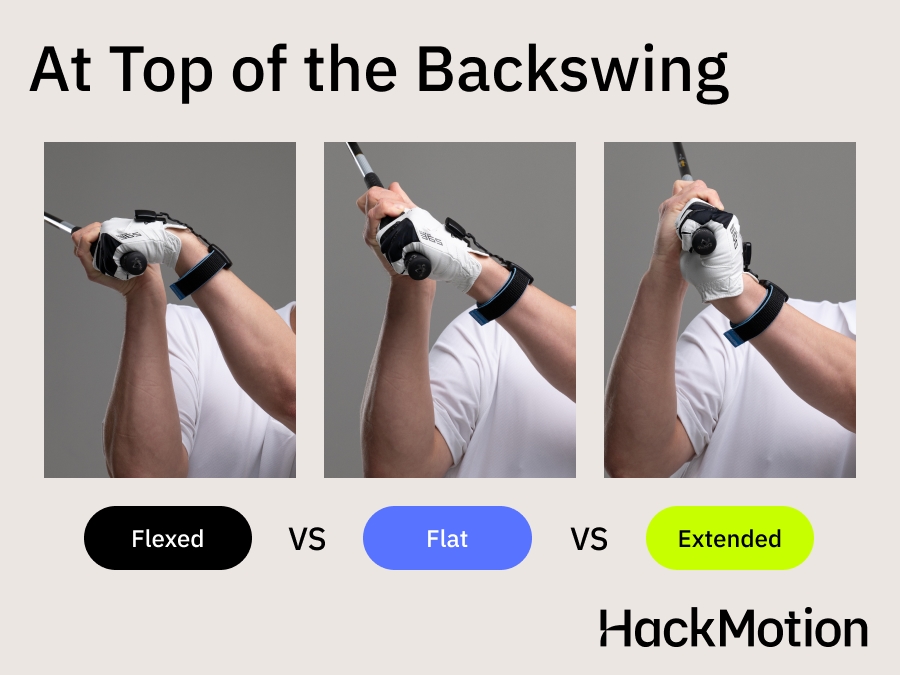
Should You Bow Your Left Wrist in The Golf Swing?
As I’ve mentioned, most golfers find the bowed or flat wrist position to be the best overall spot to hit from.
The reason is that if you can achieve a bowed or flat position at the top, your chances of reaching impact with a square clubface are considerably higher. On the other hand, if your wrist is cupped, you have a lot of work to do to square things up.
The bowed wrist has been made largely popular by Dustin Johnson. His wrist is incredibly bowed at the top of his swing, and on the way down, he doesn’t have to do much to deliver the club in a square position; in fact, there are likely times he has to extend a bit to square things up.
Tiger Woods has always played with a flat left wrist.
Ben Hogan played with a more cupped wrist at times during his career, but he was able to add enough flex into his grip on the downswing to hit the ball with a square clubface.
If your wrist is slightly bowed in your swing and you hit the ball straight with good power, don’t change it. However, if you have severe bowing and are hitting big hooks, you may need adjustments to get back on track.
Tips and Drills to Fix Bowed Wrist in Backswing
Severe bowing in your left wrist requires a swing correction. Chances are your shots are ending up left of left. Even though they may be traveling a long distance, when you have no control over direction, distance is of no help.
Here are a few ways to work on better wrist position and make some corrections in your swing.
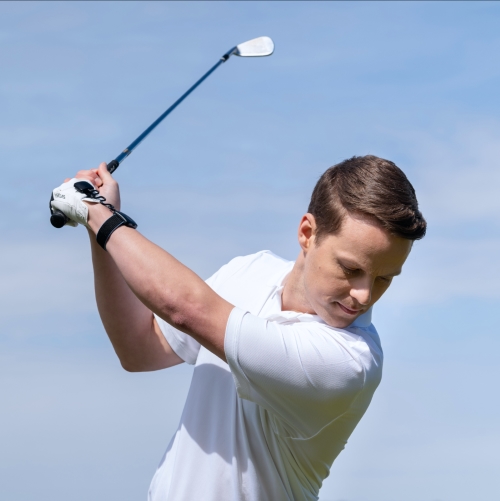
Improve your game in two weeks, even if 'wrist motion' sounds like rocket science.
Change Your Grip
Golfers with bowed wrists often have a weak grip. The weak grip takes the left hand (for a right-handed player) and turns it even further to the left. From this position, the club can get quite shallow, and the wrist starts to bow even more.
One of the first things I would look at when dealing with a bowed wrist is ensuring that your grip is neutral. To experiment and see if the grip is your issue, it’s not a bad idea to try a few swings with an exaggerated, stronger grip and see if it brings about the proper solution.
Think About the Glove Logo
I have used this drill myself, as there have been times when I’ve struggled with a bit of a bowed wrist. I put my glove on my left hand, got into a neutral grip position, and then took the club to the top of my backswing.
Once at the top, I take a look to see where the label on the back of the hand is pointed. If it’s pointed up, I know I have bowed my wrist too much.
Sometimes, in golf, we have to find the feeling or the visual that makes the concept stick, and this one has always worked for me. I try to keep that logo on the wrist relatively stable throughout the backswing, and it should decrease the chance of a bowed wrist at the top.
Not Getting Enough Bow in the Wrist
Not all golfers have a problem with too much bowing, some are trying to get to the bowed wrist in golf.
Rob Cheney offers a few drills, tips and tricks to help you feel that impact position and what the bowed wrist can do for you.
HackMotion Wrist Sensor
The HackMotion wrist sensor is the perfect way to check your wrist position and ensure it is properly positioned.
The HackMotion is unique because it can measure your wrist angles throughout your entire swing.

Remember, there is no perfect wrist motion or exact angle you need to reach. However, we do know that bowing the wrist too much at the top could cause you to hook the ball. In addition, making sure you are not extending the wrist through impact is another important feature to look for.
Wearing your HackMotion is like having your coach with you on the range at all times.
Hammer Like Impact
This video from Milo Lines Golf helps demonstrate some of the concerns golfers have with a bowed wrist through impact. If you move into a pattern of too much bowing, you can leave yourself prone to injury.
Instead, this video talks about how to work the radial and ulnar deviation to get to a strong position at impact with a flat lead wrist.
The hammer-like motion can be good for golfers who struggle with adding too much flexion and hitting shots low and left.
FAQs
Here are a few of the most commonly asked questions about the bowed wrist in golf and the position that you should be in to hit more consistent golf shots.
Should you have a flat or bowed wrist at impact?
A flat to slightly bowed wrist at impact is the best position. Many professional golfers have a slight bow in their wrists, and this helps improve compression and turf interaction.
Should your wrist be flat or bowed at the top of the backswing?
At the top of the backswing, a flat wrist will create the most consistent position. However, golfers like Dustin Johnson have a bowed wrist at the top and can still strike the ball solidly.
What are Tour players with bowed wrists?
Tour players such as Gary Player and Dustin Johnson have been known to play with a bowed wrist. The wrist bowing helps golfers to get more distance, and it can increase the ability to hit a draw, and that’s why some golfers like to keep the wrist bowed.
What causes a bowed wrist?
Some golfers are set up with a grip that is too weak, and it causes a bowing of the wrist in the takeaway. Other players flex their wrists on the backswing, and it adds more of a bowed wrist position.
How do I stop bowing my wrist when golfing?
Bowing your wrist when you golf can be corrected using the HackMotion wrist sensor. HackMotion is worn on the lead wrist, and it tracks the position of the wrist throughout the swing.
Cupped or bowed left wrist?
The bowed left wrist is a better position to be in because you should get better golf ball compression and more distance. However, a flat wrist is something that the majority of golfers should be striving for.
A cupped wrist position at the top of the backswing can lead to a slice if it is not corrected on the downswing.
Final Thoughts
If you have a bowed wrist in your golf swing, you are likely not far from being able to play some great golf.
The bowed wrist position at impact is a powerful one; you just have to ensure it is not exaggerated.
Get out on the range with your HackMotion (your personalized coach), and you will have no trouble getting your scores to be more consistent.





